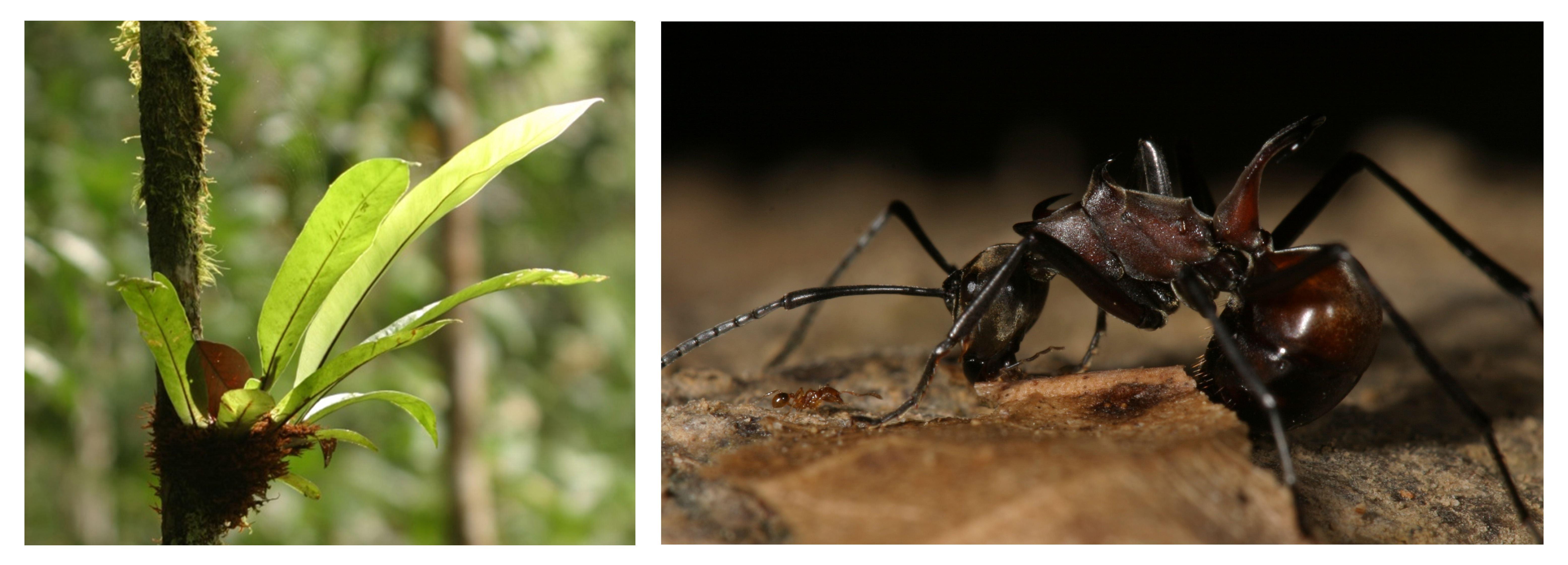
Submitted by Administrator on Wed, 11/02/2015 - 11:55
Bigger ants can get along peacefully with smaller species but there is likely to be fierce competition when species of similar sizes are forced to vie for resources, a new study shows.
Research carried out by ecologists at Imperial College London and the Department of Zoology, University of Cambridge, the Natural History Museum and Universiti Malaysia Sabah suggests that fighting is most likely to break out where there is a narrow size difference between the ants in two colonies. This is probably because they are competing for the same resources, such as the same kinds of food, or the same places to nest. Ants of different sizes, in contrast, are more likely to be able to co-exist by using different resources. The competition between species of similar sizes scales up to affect the structure of the whole ant community. The results are published in Ecology Letters (Tom M. Fayle, Paul Eggleton, Andrea Manica, Kalsum M.Yusah and William A. Foster, 2015: Experimentally testing and assessing the predictive power of species assembly rules for tropical canopy ants).
The question of how species organise themselves into communities is an important one for ecologists, but it is not easy to test because so many different factors - not all of which can be observed - can influence the result. The biologists studied colonies of tropical ants living in ferns high up in the rainforest canopy in Borneo to try to find realistic ways of simulating how ant communities organise themselves.
Using a mixture of field observation, laboratory experiments and computer modelling, the team showed that very similar-sized ants tended not to be found together. In fact, where ants of similar sizes were introduced to each other during the laboratory experiments, the resident species would become aggressive - even attempting to push the non-resident ants off the edge of the ferns.
Software developed by the team enabled them to further analyse the ants' behaviour to predict how similar in size ants needed to be before they started to compete. They used this information to model a series of rules for ant community assembly. Finally, they used the data they had collected to set up a computer-simulated rainforest to see if, by applying these rules, they were able to generate a realistic rainforest ant community.
Further research by the team will look at species interaction in communities which have been disturbed by logging and conversion to oil palm plantation to see whether the same rules of interaction and competition will apply. The methods used by the team could also be used to look at other patterns of species interaction, for example in plant communities.
